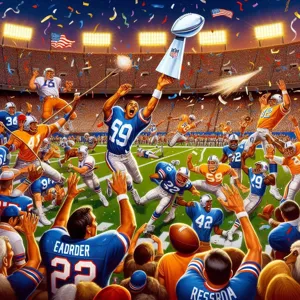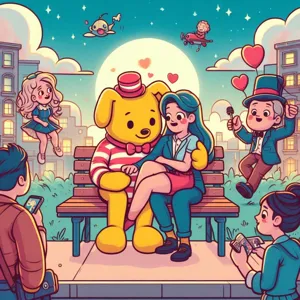In the world of soccer, the free kick has always held a special place, serving as a moment of tension and anticipation that can turn the tide of a match in an instant.
As the beautiful game continues to evolve, so too does the significance and execution of free kicks, transforming them into a strategic weapon that teams leverage to gain an edge over their opponents. From the days of traditional set-piece routines to the innovative techniques used by today’s elite players, the art of the free kick has become a captivating blend of skill, precision, and creativity. In this blog post, we will delve into how free kicks have changed the dynamics of the game, examining their increasingly tactical role, the rise of specialized free-kick takers, and the impact of technology and coaching methodologies on this crucial aspect of play. Join us as we explore whether free kicks are simply moments of individual brilliance or if they are, in fact, reshaping the very fabric of soccer strategy as we know it.
1. Introduction: The Importance of Free Kicks in Soccer

Free kicks have long been a pivotal aspect of soccer, serving as both a tactical tool and an opportunity for individual brilliance. Positioned strategically on the field, they can dramatically alter the course of a match, offering teams a chance to convert a potentially game-changing moment into a goal-scoring opportunity. The importance of free kicks extends beyond mere scoring; they embody the artistry of the beautiful game, showcasing a player’s skill, precision, and creativity.
In recent years, the evolving dynamics of free kicks have sparked discussions among players, coaches, and fans alike. With the advent of advanced training techniques, enhanced analysis, and an ever-growing emphasis on set-piece strategies, free kicks are now seen as an integral part of a team’s overall game plan. The sophistication of modern tactics has transformed how teams approach these situations, prompting them to invest time and resources into perfecting set-piece routines and honing players’ abilities to execute them under pressure.
Moreover, the psychological aspect of free kicks cannot be overlooked. The tension that builds as a player stands over the ball, with defenders lining up and the goalkeeper positioning themselves, adds an electrifying layer to the game. The anticipation from the crowd and the pressure on the player can create moments of both heroism and heartbreak. As we delve deeper into this topic, we will explore how free kicks are changing the game, examining their evolving impact on strategy, player development, and the overall spectacle of soccer. Join us as we unravel the nuances of this critical element of the sport, and discover why free kicks are not just opportunities to score, but powerful moments that can define the narrative of a match.
2. Historical Overview of Free Kicks in Soccer
The evolution of free kicks in soccer is as rich and varied as the sport itself, tracing back to its early days when rules were still being established. Initially, free kicks were a straightforward affair, and any foul committed would result in a simple restart of play. While the essence of this rule has remained, the nuances and techniques surrounding free kicks have transformed dramatically over the decades.
In the early 20th century, free kicks were often taken quickly and without much thought, typically resulting in a direct pass to a teammate or an attempt at a low shot. However, as the game grew in speed and complexity, players began to recognize the strategic potential that free kicks held. The introduction of the indirect free kick in 1925 marked a significant turning point, allowing teams to create intricate plays and orchestrated movements that could catch defenses off guard.
As tactical approaches evolved, so did the techniques employed during free kicks. By the 1970s and 1980s, renowned players like Diego Maradona and Michel Platini began to showcase a level of skill and artistry that transformed free kicks into a spectacle. Their ability to bend the ball, utilize varying spins, and place shots into the net from impossible angles captivated fans and changed how teams viewed set pieces.
The late 1990s and early 2000s saw a further evolution in free kick tactics, with players like David Beckham and Roberto Carlos popularizing the concept of the “knuckleball” shot—a strike that moves erratically in the air, making it unpredictable for goalkeepers. This period also witnessed the emergence of specialized free-kick coaches, emphasizing the importance of practice and precision in this critical aspect of the game.
Today, free kicks are not just a method of restarting play; they are a critical element of game strategy, capable of shifting momentum and altering the course of a match. With the increasing use of technology, teams analyze positionings and angles meticulously, crafting rehearsed routines that can exploit defensive weaknesses. As we examine the evolving impact of free kicks in soccer, it’s clear that they have grown from simple restarts to a vital tactical weapon, showcasing the beauty and complexity of the beautiful game.
3. Types of Free Kicks: Direct vs. Indirect

In the world of soccer, free kicks can be pivotal moments that shift the momentum of a match. Understanding the distinction between direct and indirect free kicks is essential for players, coaches, and fans alike, as each type carries its own strategic implications and potential outcomes.
**Direct Free Kicks** are awarded for more serious fouls, such as handballs or dangerous tackles committed within a player’s territory. The unique aspect of direct free kicks is that they allow the player taking the kick to shoot directly at the goal. This opportunity often transforms into an exhilarating moment for both the attacking team and the spectators. Highly skilled players, known for their proficiency in set pieces, can bend the ball around walls of defenders or strike it with precision to find the back of the net. Iconic names like David Beckham and Cristiano Ronaldo have become synonymous with spectacular direct free kicks, showcasing the artistry and power that can redefine the outcome of a game.
On the other hand, **Indirect Free Kicks** are given for less severe infractions, such as offside or obstruction. They require the ball to touch another player before a goal can be scored, which complicates the execution. Teams often use these opportunities to orchestrate intricate plays aimed at outsmarting the opposition. This type of free kick encourages creativity and teamwork, as players must work in unison to execute a swift pass or a decoy run that creates space for a shot on goal. Indirect free kicks can lead to nail-biting moments, where anticipation builds in the crowd as players set up for a cleverly devised play.
As we delve deeper into the evolution of free kicks in modern soccer, understanding these two types—direct and indirect—highlights their significance not just as a means to score, but as a strategic tool that shapes gameplay and influences team dynamics. The ability to effectively utilize both forms of free kicks can often be the fine line between victory and defeat, making them a critical aspect of a team’s tactical arsenal.
4. Key Rules and Regulations Governing Free Kicks
Understanding the rules and regulations governing free kicks is essential for both players and fans alike, as these seemingly simple set pieces can have a profound impact on the outcome of a match. Free kicks are awarded for various fouls, and they come in two primary forms: direct and indirect. A direct free kick allows the player to take a shot at the goal straight from the spot of the foul, while an indirect free kick requires that the ball be touched by another player before a goal can be scored.
The intricacies of the laws surrounding free kicks are defined by FIFA’s Laws of the Game, which stipulate not only when a free kick is awarded but also the positioning of players during the kick. For instance, the defending team must remain at least ten yards away from the ball until it is in play, a rule designed to provide the attacking team with a fair chance to score. The referee plays a crucial role in enforcing these regulations, often using their judgment to determine whether a foul warrants a free kick and ensuring that players adhere to the required distances.
In recent years, the strategies surrounding free kicks have evolved dramatically. Teams now employ specialized coaches to design intricate set-piece plays that can bewilder defenses and capitalize on even the slightest lapse in concentration. This has led to an increase in the number of goals scored directly from free kicks, as players become more skilled at bending the ball around walls and placing shots with pinpoint accuracy. As the game evolves, so too do the tactics and rules that govern free kicks, making them one of the most exciting and unpredictable aspects of soccer.
By grasping the nuances of free kick regulations and their strategic implications, fans and players alike can appreciate the tactical depth that these moments bring to the beautiful game. Whether it’s a stunning strike that curls into the net or a clever pass that catches defenders off guard, free kicks are a testament to the skill and creativity that defines soccer today.
5. The Evolution of Free Kick Techniques

The evolution of free kick techniques in soccer has been nothing short of remarkable, reflecting both the artistry and the tactical sophistication that players and coaches have brought to the game over the years. Once viewed as merely a routine opportunity to restart play, free kicks have transformed into a thrilling spectacle that can change the course of a match in an instant.
Traditionally, free kicks were executed with a straightforward approach: players would aim for power or precision, often relying on their dominant foot to deliver the ball over a wall of defenders. However, as the game has progressed, so too have the strategies employed by players. The introduction of innovative kicking techniques, such as the knuckleball, has added unpredictability to free kicks, making it increasingly difficult for goalkeepers to anticipate the trajectory of the ball. This method, famously mastered by players like Cristiano Ronaldo and David Beckham, generates a spinless flight path that leaves defenders and keepers guessing.
Moreover, the tactical aspect of free kicks has evolved. Teams now meticulously plan set-piece strategies, utilizing intricate formations and clever movements to create space and capitalize on defensive weaknesses. The rise of the short free kick—a quick pass to a teammate rather than a direct shot—has caught many defenses off guard, leading to unexpected scoring opportunities. This shift allows teams to exploit the element of surprise, often leading to quick goals that can swing momentum in their favor.
Technology has also played a role in this evolution. Video analysis tools have enabled coaches to study opponents’ defensive setups during free kicks, allowing for tailored strategies that maximize scoring chances. Players can now watch footage of their own free kick attempts, studying their techniques and making adjustments to improve their accuracy and effectiveness.
As soccer continues to evolve, so too will the art of the free kick. With an ever-growing emphasis on precision, creativity, and tactical intelligence, free kicks are no longer just a chance to restart play—they’re a vital component of modern soccer that can dictate the outcome of a game. Whether it’s a stunning direct strike that sends fans into a frenzy or a cleverly orchestrated set piece that leaves opponents scrambling, free kicks have firmly established themselves as a game-changing element in the beautiful game.
6. Iconic Free Kicks That Changed Matches
When we think of iconic moments in soccer history, certain free kicks stand out, not just for their technical brilliance but for their dramatic impact on matches. These moments often shift the momentum of the game, electrify stadiums, and etch themselves into the memories of fans. Whether it’s a perfectly curled shot that bends around the wall or a thunderous strike that rattles the crossbar, iconic free kicks have the power to define careers and alter the course of tournaments.
Consider David Beckham’s unforgettable free kick against Greece in 2001, which not only secured a dramatic last-minute equalizer but also confirmed England’s place in the 2002 World Cup. The sheer audacity and precision of Beckham’s strike from 30 yards out showcased the artistry involved in taking free kicks and left fans breathless. Similarly, Andrea Pirlo’s nonchalant, yet exquisite free kick against Mexico in the 2013 FIFA Confederations Cup exemplified the masterclass of technique and composure, as he effortlessly curled the ball over the wall into the net, demonstrating that free kicks can be as much about finesse as they are about power.
Another unforgettable moment is Lionel Messi’s stunning free kick against the United States in the 2016 Copa America semifinal. With a perfectly placed shot that soared into the upper corner, Messi not only silenced critics but also reaffirmed his status as one of the greatest players in the game. These moments highlight how a single free kick can not only change the outcome of a match but also serve as a defining highlight in a player’s career.
As the game continues to evolve, the significance of free kicks remains paramount. From the tactical setups and defensive walls to the psychological battles between the kicker and the goalkeeper, these set pieces are more than just technical executions—they are pivotal moments that can ignite passion, alter narratives, and ultimately change the trajectory of a match. As we reflect on these iconic free kicks, we’re reminded of the unpredictable beauty of soccer and the lasting impact these moments have on the history of the game.
7. Analyzing Players Known for Their Free Kick Mastery

In the world of soccer, few moments are as electrifying as a well-taken free kick. The tension builds as the ball is placed on the spot, the crowd holds its breath, and all eyes are on the player stepping up to take the shot. Some players have elevated this aspect of the game into an art form, consistently striking the ball with precision and flair that leaves fans and opponents alike in awe. Analyzing these free kick specialists provides insight into not only their technique but also the psychological edge they bring to the pitch.
One name that immediately springs to mind is Cristiano Ronaldo. Renowned for his distinctive run-up and powerful strikes, Ronaldo’s free kicks often appear unstoppable, bending and curling with a trajectory that seems almost otherworldly. His ability to score from distance has made him a perennial threat, forcing defenders and goalkeepers to rethink their strategies whenever a foul is committed near the box. With an arsenal of techniques that includes both knuckleball shots and exquisite curls, Ronaldo has rewritten the playbook on what it means to be a set-piece specialist.
Another player who has made his mark in this arena is Lionel Messi. Known for his finesse and delicate touch, Messi approaches free kicks with a different style. His ability to place the ball with pinpoint accuracy over walls and into the corners of the net has made him a formidable opponent. The subtlety of his strikes often catches goalkeepers off guard, demonstrating that elegance can be just as effective as power. Messi’s free kick prowess is a testament to his overall skill set, showcasing how technique and creativity can combine to achieve stunning results.
then there’s Andrea Pirlo, whose free kicks were often described as poetry in motion. The Italian maestro had an uncanny ability to read the game, and his dead-ball situations were no exception. With a nonchalant demeanor, Pirlo would assess the wall, gauge the goalkeeper’s positioning, and then deliver a strike that seemed to defy physics. His free kicks were characterized by a smooth, flowing technique that often left defenders and spectators alike marveling at his artistry.
These players not only excel in converting free kicks into goals but also instill a sense of fear and anticipation in their opponents. The knowledge that any foul could lead to a moment of brilliance adds an extra layer of tension to the game. As soccer continues to evolve, the impact of these free kick experts remains significant, reminding us that a single set piece can change the tide of a match and leave an indelible mark on the sport’s history. Whether through sheer power, finesse, or artistic flair, the mastery of free kicks ensures that these players will always be remembered as game-changers on the pitch.
8. The Role of Technology in Free Kick Strategy
In the ever-evolving landscape of soccer, technology has become a pivotal player in shaping strategies, particularly when it comes to free kicks. Gone are the days when teams relied solely on instinct and traditional training to prepare for these critical moments. Now, advanced analytics and cutting-edge tools are transforming how coaches and players approach free kicks, making them a more calculated and strategic aspect of the game.
One of the most significant advancements is the use of video analysis software. Coaches can dissect past matches, reviewing successful and unsuccessful free kicks to identify patterns and areas for improvement. This analysis allows teams to study the positioning of defenders and the goalkeeper, as well as the trajectory of the ball. By understanding these elements, players can fine-tune their technique and develop tailored strategies for each opponent.
Moreover, technology has introduced innovative training aids, such as virtual reality (VR) systems. These tools provide players with the opportunity to practice free kicks in simulated game environments, enhancing their decision-making skills under pressure. By immersing themselves in a realistic scenario, players can develop a better sense of timing and accuracy—critical factors that can make or break a free kick attempt.
Additionally, data analytics plays a crucial role in informing teams about the optimal players to take free kicks based on historical performance metrics. By analyzing factors such as shot accuracy, distance, and angle, coaches can make informed decisions about who should step up when the opportunity arises. This strategic insight can lead to a higher success rate and, ultimately, greater scoring opportunities.
As technology continues to advance, the integration of these tools into free kick strategies is likely to deepen. Teams that embrace these innovations and adapt their approaches will not only enhance their free kick effectiveness but may also change the broader dynamics of the game. With the stakes higher than ever, the role of technology in free kick strategy is set to become a defining element of modern soccer.
9. Free Kicks and Team Tactics: How They Influence Game Play
Free kicks, once viewed as mere set pieces, have evolved into pivotal moments that can significantly alter the course of a soccer match. As the game has progressed, teams have increasingly recognized the strategic value of free kicks, integrating them into their overall gameplay tactics. Coaches and players alike meticulously analyze not just the positioning of their own team, but also the defensive setups of their opponents when a foul occurs in a dangerous area.
The introduction of sophisticated training methods and technology has further enhanced how teams approach free kicks. Players now engage in specialized drills that focus on striking techniques, positioning, and coordinated movements. This preparation allows teams to create intricate plays designed to confuse defenders and exploit weaknesses in the wall or goalkeeper. For instance, a quick short pass can catch the defense off-guard, opening up space for a well-placed shot or a crafty cross into the box.
Moreover, the psychological aspect of free kicks cannot be overlooked. The sheer anticipation and pressure surrounding a set piece can shift momentum within a game. A successful execution often serves to boost team morale while disheartening opponents. As players become more aware of the potential game-changing power of free kicks, their presence on the field has transformed from a simple restart into a crucial component of tactical play.
As teams continue to innovate and refine their free kick strategies, it’s clear that these seemingly routine moments have become a dynamic element of soccer, capable of influencing not only the scoreline but also the overall flow and intensity of the game.
10. Case Studies: Free Kicks in Recent Major Tournaments
To truly understand the evolving impact of free kicks in soccer, we can look at several compelling case studies from recent major tournaments. These instances not only highlight the technical execution and tactical significance of set pieces but also demonstrate how they can shift the course of a match.
Take, for instance, the 2018 FIFA World Cup, where Croatia’s Luka Modrić consistently showcased his prowess from dead-ball situations. His expertly taken free kicks were pivotal in Croatia’s journey to the finals, particularly during the knockout stages. In the quarterfinals against Russia, Modrić’s ability to deliver precise balls into the box created scoring opportunities that ultimately turned the tide of the match. This example illustrates how a single player can leverage free kicks not just as a scoring opportunity, but as a strategic tool to orchestrate attacking plays that put immense pressure on the opposition.
Another notable case study is the UEFA Euro 2020, where England’s Harry Kane demonstrated the importance of free kicks in crucial moments. His free kick against Denmark in the semifinals was a turning point, showcasing how a well-placed set piece can change the dynamics of high-stakes matches. The goal not only propelled England into the final but also ignited a wave of national pride, emphasizing the emotional and psychological impact that free kicks can have on both players and fans alike.
Moreover, the 2022 World Cup saw Brazil’s Neymar executing breathtaking free kicks that underscored the artistry involved in set pieces. His technique, blending finesse and power, resulted in goals that not only counted on the scoreboard but also electrified crowds around the world. Each successful free kick reinforced the idea that these moments are not merely tactical opportunities but spectacles that can captivate and inspire.
These case studies highlight that free kicks are evolving from simple set plays to critical game-changing moments that can define the success of teams in high-pressure tournaments. As teams continue to invest in specialized coaching and training for set pieces, the anticipation of free kicks becoming a decisive factor in matches is more palpable than ever. By examining these instances, we can appreciate the intricate role free kicks play in shaping the outcome of the beautiful game.
11. The Psychological Impact of Free Kicks on Players and Teams
The psychological impact of free kicks on both players and teams cannot be understated; they represent not just a tactical opportunity, but also a moment laden with pressure and expectation. For the player stepping up to take the kick, the stakes are high. This solitary moment on the pitch can evoke a whirlwind of emotions—confidence, anxiety, determination—culminating in a critical decision that could turn the tide of the game.
When a player stands over the ball, the quiet tension is palpable. Teammates watch with bated breath, while defenders brace themselves for the impending strike, and the opposing goalkeeper sizes up the situation, all acutely aware that a single kick can lead to glory or despair. This psychological duel extends beyond individual athletes; entire teams experience a shift in morale based on the outcome of a free kick. A successful strike can galvanize a squad, boosting their confidence and momentum, while a missed opportunity can lead to frustration and a lack of cohesion, potentially unraveling the team’s focus.
Moreover, free kicks can be a powerful tool for psychological warfare. Teams may employ various strategies to disrupt the kicker’s concentration, such as positioning players to create visual distractions or engaging in verbal banter from the wall. Conversely, the team taking the kick can use the moment to build a narrative of invincibility, reinforcing their belief in their capabilities and determination to secure a win.
The evolving tactics surrounding free kicks have also influenced training regimens, with teams increasingly focusing on the mental aspects of taking and defending against these set pieces. Visualization techniques, pressure simulation scenarios, and team-building exercises are now commonplace as coaches seek to prepare their players for the psychological challenges that free kicks present.
In essence, free kicks in soccer have transcended their role as mere set pieces; they are now a complex interplay of mental fortitude, team dynamics, and psychological strategy that can significantly impact the outcome of a match. As the game continues to evolve, understanding this psychological dimension will be crucial for players and coaches alike, as they navigate the high-stakes environment of modern soccer.
12. Coaching Strategies for Effective Free Kick Execution
As the dynamics of soccer continue to evolve, coaching strategies around free kick execution are becoming increasingly sophisticated. Gone are the days when a player simply stood over the ball and struck it with the hope of finding the back of the net. Today’s coaches are employing a variety of innovative techniques and tactics to maximize their team’s effectiveness during these pivotal moments.
First and foremost, understanding the positioning of both the attacking and defensive players is crucial. Coaches now emphasize the importance of analyzing the wall’s formation and the goalkeeper’s positioning before a free kick is taken. This analysis allows teams to devise tailored approaches based on the specific scenario, whether that means opting for a direct shot, a layoff pass to a teammate, or a cleverly disguised set piece that takes the defense by surprise.
In training sessions, coaches increasingly focus on developing specialized drills that simulate real-game scenarios. Players practice striking the ball from various distances and angles, honing their technique to ensure precision and power. These drills often incorporate pressure situations, which not only enhance individual skill but also foster teamwork and communication. The ability to coordinate movements among players during a free kick can lead to a perfectly executed play that leaves the opposition bewildered.
Moreover, the psychological aspect of free kick execution is gaining recognition in coaching strategies. Coaches are instilling confidence in their players through mental conditioning, encouraging them to visualize success before stepping up to the ball. Some teams even bring in sports psychologists to help players manage the pressure that comes with taking crucial free kicks in high-stakes situations.
Finally, the role of data analysis is becoming more prominent in shaping free kick strategies. Coaches can now leverage technology to analyze past performances, studying how different players fare under various conditions. This data-driven approach allows teams to identify the most effective free kick takers and determine the optimal strategies for different scenarios—whether it’s a direct shot from just outside the box or a more intricate play designed to exploit defensive weaknesses.
In summary, the evolving strategies surrounding free kick execution are redefining the way the game is played. By integrating analysis, technique, psychology, and teamwork, coaches are equipping their players with the tools needed to transform free kicks into game-changing moments, further emphasizing their significance in modern soccer.
13. The Future of Free Kicks: Trends and Predictions
As soccer continues to evolve, so too does the strategic importance of free kicks, a facet of the game that has undergone significant transformation over the years. The future of free kicks is set to be influenced by a confluence of factors, including advancements in technology, shifts in player training methodologies, and the ever-evolving tactics employed by coaches.
One prominent trend is the increasing use of data analytics to inform free kick strategies. Coaches and analysts are now harnessing sophisticated software to study opponents’ defensive setups and goalkeeper tendencies. This analytical approach allows teams to craft highly tailored free kick plays that exploit specific weaknesses, turning what was once a straightforward opportunity into a calculated chance for scoring. As more teams adopt this data-driven mindset, we can expect free kicks to become even more unpredictable and dynamic.
Additionally, the rise of specialized training for set pieces is likely to shape the future landscape of free kicks. More clubs are investing in set-piece coaches who focus exclusively on perfecting these moments. Players are now dedicating more time to rehearsing intricate routines that not only enhance their individual skills but also improve team cohesion during set plays. This specialized focus is expected to yield a higher success rate for free kicks, making them a more potent weapon in a team’s arsenal.
Another significant factor is the evolution of player skill sets. With younger athletes increasingly entering the professional arena, we are witnessing a new generation of players who possess remarkable technical abilities and creativity. This trend could lead to a broader variety of free kick techniques, from audacious curling shots to clever lay-offs that catch defenders off guard. As players become more versatile, the traditional ways of executing free kicks might give way to innovative approaches that challenge conventional defenses.
Lastly, the influence of fan engagement and entertainment cannot be overlooked. As the viewing experience becomes more immersive through technology such as augmented reality and instant replay analysis, fans are likely to demand more excitement from every aspect of the game, including free kicks. This could prompt teams to develop eye-catching routines that not only aim for goals but also entertain, transforming the way free kicks are perceived and executed on the pitch.
In summary, the future of free kicks in soccer appears vibrant and full of potential. With a blend of data analytics, specialized training, evolving player skills, and a focus on fan engagement, free kicks are set to play an increasingly critical role in shaping the outcome of matches and the overall spectacle of the beautiful game. The evolution of this aspect will undoubtedly keep fans on the edge of their seats, eagerly anticipating the next moment of magic from a free kick situation.
14. Conclusion: Are Free Kicks Truly Changing the Game?
In conclusion, the evolution of free kicks in soccer has undeniably changed the dynamics of the game, transforming them from mere set pieces into pivotal moments that can swing the momentum of a match. The artistry involved in taking a free kick has grown exponentially, with players now employing a variety of techniques and strategies that reflect a deeper understanding of physics and biomechanics. From the curling shots that bend around walls to the direct strikes that seem to defy logic, modern free kicks capture the imagination of fans and players alike.
Moreover, the impact of technology cannot be overlooked. The introduction of VAR (Video Assistant Referee) has altered the way referees approach decision-making during set pieces, leading to more accurate calls that can dramatically influence the outcome of a game. As teams invest more in specialized training for free kicks, the skill level displayed has reached new heights, making them a critical component of offensive play.
As we reflect on the role of free kicks in today’s game, it’s clear that they are no longer just an opportunity for a team to regain possession; they are a tactical weapon that can be used to exploit defensive weaknesses and create scoring opportunities. For both players and coaches, understanding the intricacies of free kicks has become essential to success on the pitch. As the game continues to evolve, one thing is certain: free kicks will remain a fascinating aspect of soccer, captivating audiences and reshaping strategies for years to come. Are they truly changing the game? The evidence suggests they are, and their influence is likely to grow even further in the future.
15. Discussion: Your Thoughts on the Impact of Free Kicks in Soccer
As we delve into the complexities of free kicks in soccer, we invite you to share your thoughts and insights on this pivotal aspect of the game. The evolution of free kicks, from mere opportunities to score to strategic plays that can dictate the flow of a match, has sparked lively debate among fans, players, and analysts alike.
In recent years, the artistry behind set-piece execution has become a focal point, showcasing the skills of both attackers and defenders. With players like Lionel Messi and Cristiano Ronaldo, known for their stunning free kick prowess, the narrative around these moments has shifted dramatically. No longer are free kicks seen simply as a chance to score; they are now calculated opportunities that can turn the tide of a game and offer dramatic moments that resonate with fans long after the final whistle.
Moreover, the introduction of technology like VAR (Video Assistant Referee) has added another layer of scrutiny and strategy to the execution of free kicks. Every decision made, from the placement of the ball to the positioning of the wall, is now under the microscope, influencing how teams prepare and execute their tactics.
We want to hear from you! Do you believe that free kicks are becoming more influential in determining match outcomes? Have you noticed a rise in the tactical focus placed on these situations by coaches? Share your experiences, opinions, and any memorable free kick moments that you think encapsulate the evolving impact of this integral part of soccer. Your perspective could shed light on how free kicks are shaping the game, and perhaps even help us to better understand their significance in the beautiful sport we all love.
As we conclude our exploration of the evolving impact of free kicks in soccer, it’s clear that these set pieces have transcended their traditional role to become pivotal moments that can sway the outcome of a match. From the artistry of skillful takers to the strategic innovations enacted by teams, free kicks are not merely opportunities for scoring but are instrumental in shaping the dynamics of the game. As coaches and players continue to adapt and refine their approaches, we can expect free kicks to remain a focal point of excitement and intrigue in soccer. The future may hold even more dramatic developments in this area, making it essential for fans and analysts alike to keep their eyes on how these moments influence the beautiful game. Thank you for joining us on this journey to understand free kicks; we look forward to witnessing how they continue to evolve and impact soccer in the seasons to come!












